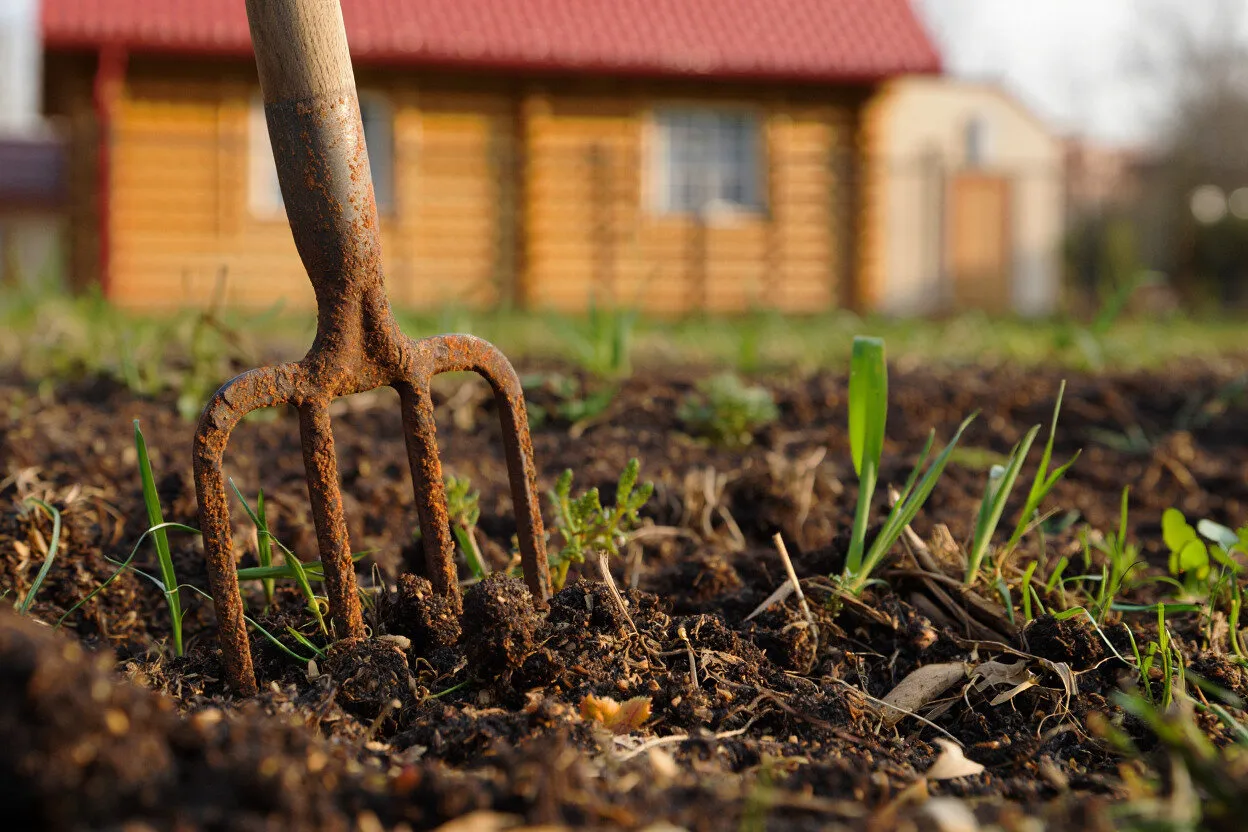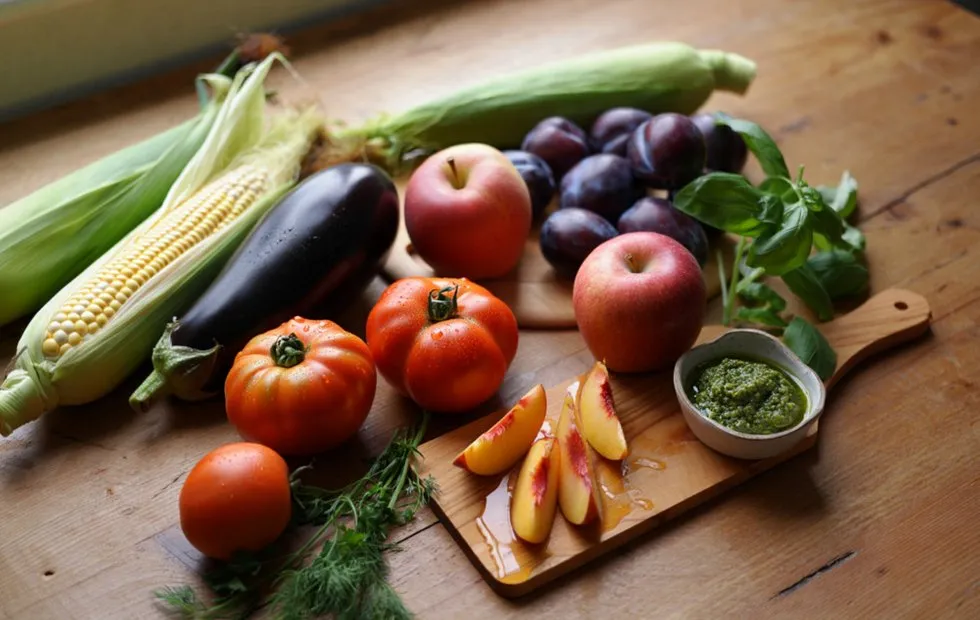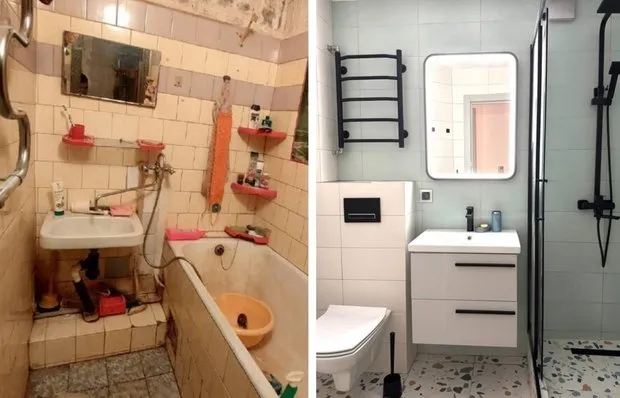There can be your advertisement
300x150
Do You Need to Replant the Garden in Autumn or Is Raking Enough
Can you finally stop stressing about tilling without losing your harvest?
Every autumn, sacred wars rage on dacha forums between supporters of deep tilling and advocates of surface raking. The former curse, swearing that without a spade in hand the soil will turn into concrete. The latter prove that tilling destroys the soil structure and kills earthworms. And yet, neighbor Vasily has not picked up a spade in 40 years and harvests better than everyone else. Who is right? And can you finally stop stressing about tilling without losing your harvest?
Main points from the article:
- Deep tilling is only necessary on heavy clay soils and during initial clearing of virgin land;
- On light sandy and loamy soils, surface raking to 10-15 cm is sufficient;
- Tilling destroys the soil structure and can reduce yield by 15-20%;
- Mulching with surface raking gives better results than traditional tilling;
- Earthworms and soil microorganisms naturally till the ground more effectively than any spade;
- Transitioning from tilling to raking requires 2-3 years for soil adaptation.
What happens in the soil when we till it
To understand whether tilling is needed, let's take a look at the soil through a scientist's eyes. Soil is not just a substrate for plants, but a complex ecosystem with billions of microorganisms.
In natural soil there is a clear stratification. In the upper layer live aerobic bacteria, which need oxygen. Below are anaerobic ones that cannot tolerate oxygen. When we flip a soil layer with a spade, we literally relocate the residents of the upper floor to the basement and basement dwellers to the attic. The result is predictable: mass death of beneficial microflora.
Earthworms create an entire network of tunnels in the soil — these are natural drainage and ventilation channels. A spade destroys this system in minutes. Earthworms need a month or more to restore the damaged structure.
But there are also positive aspects of tilling. On heavy clay soils, it does indeed improve air circulation and helps plant roots penetrate deeper. The question is whether the effort is worth it on other soil types.

A decade-long experiment
Agro-technician Mikhail has conducted comparative observations on two adjacent plots for ten years. One was tilled traditionally, the other only raked with a cultivator to a depth of 10-12 centimeters.
In the first two years, the 'lazy' plot indeed lagged behind the tilled one. The soil was denser and seedlings emerged later. But from the third year on, the situation changed dramatically. On the plot without tilling, the soil became loose and airy like down. Yield increased by 20-25% compared to the tilled plot.
The secret was simple. Over three years, earthworms multiplied on the 'lazy' plot — their numbers increased fivefold compared to the tilled one. These tireless workers created an ideal soil structure that no spade could provide.
But the most interesting discovery came during a drought. The plot without tilling retained moisture twice as well. It turned out that earthworm tunnels function like a drip irrigation system, delivering water to plant roots even in dry weather.
When a spade is really needed
- Heavy clay soils — the main argument for autumn tilling. Such soil poorly allows water and air through, plant roots literally suffocate in it. Here tilling works as a resuscitation procedure, saving the soil from complete compaction.
- Virgin plots also require initial deep processing. The dense perennial grasses are so tough that they can't be overcome without a spade. But this is a one-time procedure — after the plot is cleared, you can switch to gentle methods.
- Heavily infested plots with perennial weeds like couch grass or sorrel are sometimes easier to deal with through tilling and careful root removal. Though alternatives exist — mulching with black plastic or cardboard.
- Plots after construction, where the soil has been compacted by machinery, need deep raking to restore structure.
Alternatives to traditional tilling
- Fokin's cultivator — a tool that revolutionized dacha farming. It rakes soil to depths of 5-15 centimeters without flipping the layer. At the same time it cuts weeds and mixes the surface with compost or humus.
- Rototiller — a mechanized alternative to manual raking. The tiller's blades chop soil to the desired depth without disrupting stratification. However, there is a risk of forming a compacted layer at the tillage depth.
- Straw mulching — the gentlest method. A thick layer of organic mulch suppresses weeds, retains moisture and gradually improves soil structure. Earthworms and other soil inhabitants naturally convert mulch into humus.
- Green manures — living mulch that works as well as a spade. Roots of mustard, rye or phacelia loosen soil to depths up to 60 centimeters. After mowing, the green mass becomes natural fertilizer.
Transition period: what to expect in the first years
- In the first year, the soil will indeed be denser than usual. Seeds may germinate slower, especially small ones. This is a normal reaction of the soil to changes in farming practices.
- In the second year, things will start improving. First worm castings will appear — an indication that soil fauna is recovering. The soil will become noticeably looser, especially in the surface layer.
- By the third year, a qualitative leap will occur. The soil will acquire a spongy structure and moisture retention will increase many times over. Yield not only will recover but may exceed previous levels.
The key during the transition period is not to panic and return to spade use at the first difficulty. Nature needs time to restore what was destroyed over decades of intensive cultivation.
Economics: time versus yield
Tilling one hundred square meters takes 6-8 hours of heavy physical labor. Surface raking the same area with a cultivator takes 1.5-2 hours of light work. The time savings are obvious.
But there are also less obvious financial aspects. Plots without tilling require more mulch and organic fertilizers, especially in the first years. However, they save on watering — moisture is retained many times better.
In the long run, yield from 'lazy' beds is higher. Vegetables are tastier and more durable — a result of better plant nutrition in structured soil.
Back health is another savings factor. Many dacha owners over 50 physically cannot till their plots. Transitioning to gentle techniques allows extending active dacha years by several.
Compromise solutions for doubters
- Partial tilling — only deep till the beds for root vegetables, rake other areas. This allows you to observe differences yourself.
- Till every other year — till this season, rake next. The soil gets a rest to recover its structure.
- Zone-based processing — till heavy areas, just rake light ones. This approach considers the specific needs of each garden area.
- Gradual transition — exclude a few beds from tilling each year, observe results. After 3-4 years the entire garden can switch to gentle techniques.
Verdict: listen to your soil
There is no universal answer to the tilling question. Each plot is unique, like a fingerprint. Heavy clay and light loam require radically different approaches.
But modern science leans toward gentle soil processing methods. They not only save effort but also create a healthier garden ecosystem. The key is to be unafraid to experiment and give nature a chance to show what it can do without our excessive interference.
Perhaps, in a few years you will also be amazed at how you used to live with a spade in hand
More articles:
 6 Ideas from an Aesthetic Apartment with Vintage Furniture That You Can Replicate
6 Ideas from an Aesthetic Apartment with Vintage Furniture That You Can Replicate How We Designed the Kitchen in the Style of Old Moscow Interiors
How We Designed the Kitchen in the Style of Old Moscow Interiors 7 Ideas for an Apartment with the Atmosphere of Old Moscow That You'll Want to Replicate
7 Ideas for an Apartment with the Atmosphere of Old Moscow That You'll Want to Replicate 6 Genius Ideas for Storage in an Old-Fashioned Apartment
6 Genius Ideas for Storage in an Old-Fashioned Apartment The Legend's Home: Where Coco Chanel Lived
The Legend's Home: Where Coco Chanel Lived Secrets of August Kitchen: Cooking in a Way That Makes the Family Ask for More
Secrets of August Kitchen: Cooking in a Way That Makes the Family Ask for More Autumn Capsule: How to Build a Wardrobe of 20 Items and Look Different Every Day
Autumn Capsule: How to Build a Wardrobe of 20 Items and Look Different Every Day Before and After: Stylish and Budget-Friendly Bathroom Renovation in a Khrushchyovka
Before and After: Stylish and Budget-Friendly Bathroom Renovation in a Khrushchyovka